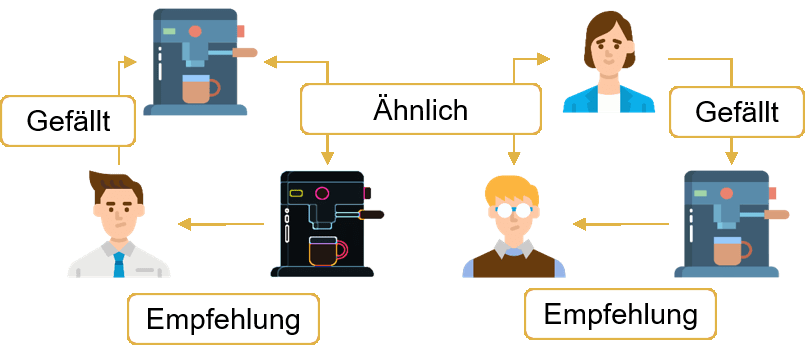©Adobe Stock
AI Recommender Systems
Recommender systems, also called recommendation systems in German, are widely used and can be found online on any major platform. The purpose of such a system is always to link a human being to possible objects of experience. The decision or selection of an alternative is made only from a subset of all options. People are being relieved.
In industry, there are a large number of decisions with great freedom. Whether it is about engineers’ product development or the current advertising strategy is irrelevant.
State of play
There are two types of recommendering systems. Content Based Systems select similar content from a basic set. In collaborative systems, information is generated by the user, which is recommended. Depending on the data situation and the use case, this may result in a tailor-made recommendation system based on data.
Transparency of recommendations is sometimes difficult to achieve. However, in the application, the uncertainty of such a system in the selection of proposals is offset by the expert with decision-making power.
Technology and deployment
Description of technology
The following figure shows the fundamental differences in the design of recommender services. On the left side, the similarity between two or more products is calculated and similar products are proposed to the user. On the right side, the similarity between two or more users (e.g. based on purchasing behaviour or similar product reviews and interests) will be calculated and products proposed by similar users.
In the technical implementation, the mathematical distance between data points (products or persons) is calculated. The lower the distance measure, the greater the similarity. Products are mathematically described, e.g. through meta-data (keywords) or parameters, individuals through their purchasing behaviour or product ratings.

Possible use scenarios
Possible operational scenarios are available wherever decisions need to be taken. Recommender systems support decisions.
For example, samples can be identified when filling in delivery/order forms. Proposals in the relevant fields can greatly reduce the times otherwise needed to fill in.
Modularisation is widely used in mechanical engineering. The patterns in the configuration of a project can be learned through recommendering systems. In this case too, businesses and workers benefit from the help of artificial intelligence, including in the form of time savings.
Opportunities for SMEs
contact
Use our technology radar to keep a look at the main technologies relevant to SMEs!
